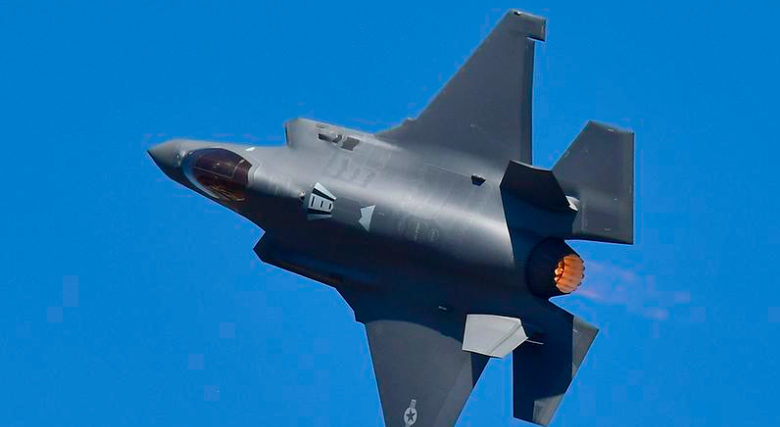17 February 2025 : Daily Current Affairs
1. How does a President’s rule function?
- 1. How does a President’s rule function?
- 2. Will U.S.’s F-35 stealth fighter jets fit into IAF’s future plans?
- 3. A success story like Amul
- 4. Decongesting the court
- The Growing Crisis of Judicial Backlog
- Judicial Delays: Who is Responsible?
- Frivolous Litigation and Its Consequences
- Striking a Balance: Speedy Justice vs. Legal Procedure
- Global Best Practices in Tackling Judicial Delays
- A Collective Responsibility for Judicial Efficiency
- Conclusion: A Systemic Overhaul is Needed
- 5. India and Sri Lanka Strengthen Ties in Critical Minerals, Exploration, and Mining
- Prelim Facts
- 1. AI-enabled cameras in Similipal Tiger Reserve send poaching plummeting
- 2. Carbon capture: a pricey fix?
(Source – The Hindu, International Edition – Page No. – 10)
| Topic: GS2 – Indian Polity |
| Context |
|
| Constitutional Basis for President’s Rule |
|
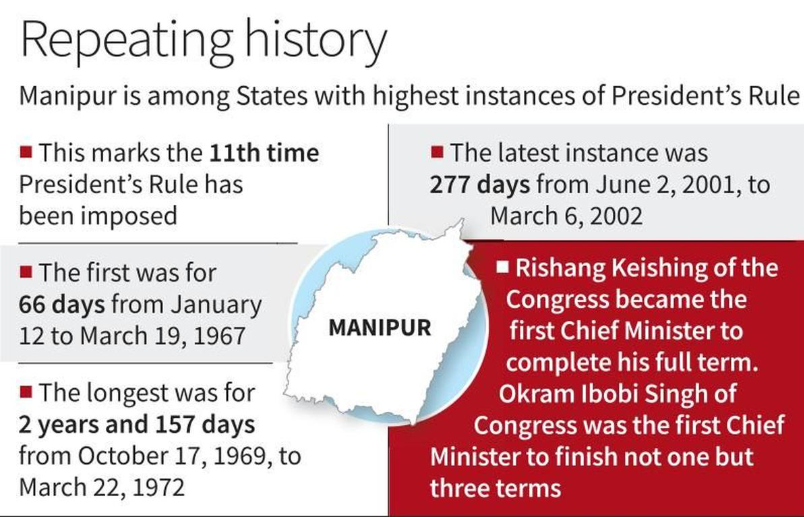
Process of Imposing President’s Rule
- Article 356 allows the President to take over the State’s executive functions if the government fails constitutionally.
- The President acts based on a report from the Governor or other sources.
- Once imposed, the State government loses executive power, and the legislature is suspended.
- Parliament assumes the power to legislate for the State.
Approval and Duration of President’s Rule
- The proclamation must be approved by both Houses of Parliament within two months.
- If approved, it lasts six months but can be extended in six-month intervals.
- Extensions beyond one year require:
- A National Emergency in the country or part of the State.
- The Election Commission’s certification that elections cannot be held.
- President’s Rule cannot last more than three years.
Difference Between National Emergency and President’s Rule
| Aspect | National Emergency (Article 352) | President’s Rule (Article 356) |
| Imposition Reason | Security threats like war or armed rebellion | State government failure to function constitutionally |
| Duration | Can last indefinitely with parliamentary approval | Requires simple majority for extension, cannot exceed 3 years |
| Parliamentary Approval | Needs a special majority | Requires a simple majority |
| State Government Function | State governments continue to function | State executive is dismissed |
| Assembly Status | Assembly remains functional | Assembly may be placed under suspended animation |
| Revival of Assembly | No provision for revival | Assembly can be revived if political stability is restored |
Impact on Fundamental Rights
- President’s Rule does not suspend fundamental rights.
- During a National Emergency, Article 19 (freedom of speech and expression) is suspended.
- Under President’s Rule, the President controls the State through the Governor and advisers.
- The President can authorize State expenditure under Article 357.
Frequency of President’s Rule in India
- President’s Rule has been imposed 134 times in different States and Union Territories since 1950.
- The first instance was in Punjab in June 1951.
- Manipur has experienced it 11 times, making it one of the most affected States.
- The longest President’s Rule in Manipur lasted over two years and 157 days (1969–1972).
- Jammu & Kashmir has had the longest cumulative President’s Rule, lasting over 12 years (4,668 days) due to security concerns.
Judicial Review and Limitations on President’s Rule
- Initially, courts upheld frequent use of President’s Rule.
- In 1994, the Supreme Court redefined its scope in a landmark case.
- The Court ruled that:
- Article 356 should be used only as a last resort.
- The Centre must issue a warning before dismissing a State government.
- President’s Rule is subject to judicial review and can be struck down if misused.
- Parliament’s approval is needed before dissolving a State Assembly.
- It must be invoked only for a breakdown of constitutional machinery, not for political reasons.
Conclusion
- President’s Rule is a constitutional provision meant for crises but has been frequently used.
- Judicial rulings now ensure stricter checks to prevent misuse.
- Manipur’s case highlights ongoing instability and the need for political resolution.
| Practice Question: Discuss the differences between National Emergency and President’s Rule in India, with reference to their imposition, duration, and impact on state governance. (250 Words /15 marks) |
2. Will U.S.’s F-35 stealth fighter jets fit into IAF’s future plans?
(Source – The Hindu, International Edition – Page No. – 6)
| Topic: GS3 – Security |
| Context |
|
Impact on India’s Fighter Programmes
- This announcement has raised questions about the possible procurement of the F-35 for the Indian Air Force (IAF).
- While there is a gap in fighter induction and modernization, the formal process for procurement has not started yet.
- The decision may impact India’s own fighter development programmes, which are essential for achieving self-reliance.
Challenges with F-35
- The F-35 is a multi-role, single-seat aircraft, but the IAF prefers twin-seater jets.
- The F-35 programme has been delayed by over a decade and is $209 billion over budget.
- The aircraft might face integration challenges in India’s military, which uses a variety of systems from different countries.
India’s Indigenous Fighter Projects
- India is working on the Light Combat Aircraft (LCA)-Mk1A, which has been delayed due to engine issues.
- The LCA-Mk2, a larger version, will roll out by the end of 2025.
- India is also developing its own Fifth-Generation Fighter Aircraft (FGFA), expected by 2034-35.
- A Multi-Role Fighter Aircraft (MRFA) tender for acquiring 114 foreign jets is also in progress.
- The F-35’s integration into IAF plans remains uncertain due to these ongoing projects.
Conclusion
- Overall, the F-35 offer from the U.S. raises questions about its integration into India’s fighter fleet, potentially affecting indigenous programmes while balancing modernization and self-reliance goals.
| F-35 stealth fighter jets: |
|
| Practice Question: Discuss the implications of the U.S. offer to provide F-35 stealth fighters to India on its indigenous fighter development programmes and military modernization plans. (150 Words /10 marks) |
3. A success story like Amul
(Source – Indian Express, Section – The Ideas Page – Page No. – 09)
| Topic: GS3 – Agriculture |
| Context |
|
Analysis of the news:
Growth of India’s Fruits and Vegetables Sector
- India’s fruits and vegetables (F&V) sector is expanding at a faster pace than cereals, contributing nearly 30% to the value of crop agriculture.
- Besides being more nutritious, it has the potential to enhance farmers’ incomes significantly.
- However, the sector lacks the necessary policy attention and institutional support compared to cereals.
- The absence of organized value chains, inadequate storage facilities, and limited processing infrastructure make F&V highly vulnerable to seasonal price fluctuations, market gluts, and post-harvest losses.
- According to NABCONS (2022), post-harvest losses amount to 8.1% for fruits and 7.3% for vegetables, contributing to an annual economic loss of ₹1.53 trillion.
- Additionally, due to fragmented supply chains, farmers receive only about 30% of the consumer price, highlighting the need for structural reforms.
Learning from India’s Milk Revolution
- The transformation of India’s dairy sector under Verghese Kurien’s leadership is a model of success that the F&V sector could potentially replicate.
- Through a well-structured cooperative model, India transitioned from a milk-deficient nation to the world’s largest milk producer, with 239 million tonnes in 2023-24.
- Milk cooperatives like AMUL ensured that dairy farmers received between 75-80% of the consumer price.
- Unlike milk, however, the F&V sector involves multiple commodities, each requiring specialized infrastructure.
- Seasonal fluctuations, regional production concentration, and high perishability make price stabilization difficult.
- A structured approach involving aggregation, grading, processing, and direct market linkages is essential to ensure stability and better earnings for farmers.
The Role of Farmer Producer Organisations (FPOs)
| What is a Farmers Producer Organisation (FPO)? |
|
- Farmer Producer Organisations (FPOs) are key to addressing structural inefficiencies in the F&V sector.
- A case in point is Sahyadri Farmer Producer Company Ltd (SFPCL) in Maharashtra’s Nashik district.
- Founded in 2004 by Vilas Shinde, SFPCL has grown from a small group of 10 farmers to a vast network covering 31,000 acres and 26,500 registered farmers by 2023-24.
- Its turnover surged from ₹13 crore in 2011-12 to ₹1,549 crore in 2023-24, showcasing the power of organized farming.
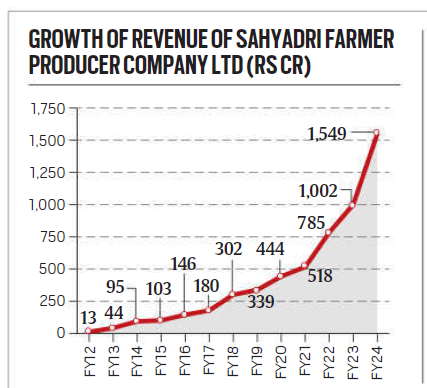
- About 64.6% of SFPCL’s revenue comes from domestic sales, while 35.4% comes from exports, with grapes and tomatoes being the dominant contributors.
- SFPCL’s success lies in its ability to integrate small farmers into structured value chains, ensuring quality, traceability, and access to global markets.
Strengthening Value Chains and Processing Infrastructure

- SFPCL’s ability to connect farmers to international markets has made it India’s largest grape exporter, with 90% of its grapes reaching the EU and UAE.
- Farmers under SFPCL receive around 55% of the Free on Board (FOB) price, significantly higher than traditional markets.
- The company has also invested heavily in processing infrastructure, particularly for tomatoes, which contribute 35% of its domestic revenue.
- By processing tomatoes into ketchup, puree, and sauce, SFPCL has mitigated price volatility and ensured stable farmer incomes.
- The company’s expansion has also created over 6,000 jobs, with women comprising 32% of the workforce.
- These interventions highlight how organized FPOs can revolutionize the F&V sector through aggregation, processing, and direct market access.
Scaling Up: Policy Interventions and Future Roadmap
- The success of Sahyadri Farms provides a scalable model for the entire F&V sector. The Indian government has targeted the formation of 10,000 FPOs, with 8,875 already registered as of August 2024.
- Scaling up FPOs like SFPCL could replicate the milk revolution in the F&V sector.
However, three key interventions are needed:
- Strengthening FPOs – Providing institutional support, working capital, infrastructure, and digital integration through platforms like the Open Network for Digital Commerce (ONDC). Blockchain technology could improve transparency and farmer earnings.
- Revamping Operation Greens and the National Horticulture Mission – The government’s 2018 initiative to stabilize perishable prices lacked a strong leader like Kurien and had limited financial backing (₹500 crore). A more robust implementation strategy is required.
- Developing Commodity-Specific Value Chains – At least 10-20% of F&V produce should be processed to prevent distress sales and stabilize prices.
Towards a National Fruits and Vegetables Board
- To transform the F&V sector, India needs a National Fruit and Vegetable Board, akin to the National Dairy Development Board (NDDB).
- Such an institution would streamline market linkages, promote efficient value chains, and integrate retailers like SAFAL to ensure better price realization for farmers.
- The key question remains: Can Vilas Shinde become the Verghese Kurien of India’s F&V sector?
- The Sahyadri model has already demonstrated a successful approach. With the right scale, policy support, and leadership, India could ensure that F&V farmers receive at least 55-60% of the consumer price, leading to a major transformation in the agricultural landscape.
Conclusion
- India’s F&V sector has immense potential but remains unorganized, leading to high post-harvest losses and low farmer earnings.
- With the right leadership and reforms, India can replicate its milk success in the F&V sector, driving agricultural prosperity.
| Practice Question: India’s fruits and vegetables (F&V) sector is growing faster than cereals but suffers from fragmentation, post-harvest losses, and price volatility. Discuss the role of Farmer Producer Organisations (FPOs) in transforming the F&V sector, drawing lessons from India’s dairy revolution. (250 Words /15 marks) |
4. Decongesting the court
(Source – Indian Express, Section – The Ideas Page- Page No. – 09)
| Topic: GS2 – Polity – Judiciary |
| Context |
|
The Growing Crisis of Judicial Backlog
- The Indian judicial system is currently grappling with an overwhelming backlog of pending cases, leading to significant delays in justice delivery.
- Data reveals that 74.9% of high court cases and 63.1% of lower court cases have been pending for over a year, with other judicial fora similarly saturated.
- The adage “justice delayed is justice denied” holds true in this context, as prolonged litigation not only affects litigants but also erodes public confidence in the judiciary.
- Addressing this crisis requires an active and coordinated effort from all stakeholders, including courts, lawyers, litigants, and policymakers.
Judicial Delays: Who is Responsible?
- While it is common to attribute delays to an overburdened judiciary, the onus of timely justice falls on multiple stakeholders.
- The legal profession, government agencies, litigants, and even courts contribute to the problem in various ways.
- The recent Supreme Court judgment in K Vadivel v K Shanthi & Ors (September 30, 2024) highlights the role of frivolous litigation in clogging the justice system.
- The case, which originated from a 2013 FIR and underwent multiple procedural delays, underscores how prolonged proceedings can be exacerbated by unnecessary legal filings and repeated interventions.
Frivolous Litigation and Its Consequences
The Supreme Court, in its ruling, directly pointed to the legal profession’s role in ensuring that meritless cases do not enter the judicial system. The judgment noted that:
- Lawyers must exercise discretion before filing applications with “outrageous and ex facie unbelievable averments.”
- Frivolous cases consume valuable judicial time, delaying cases that genuinely require attention.
- Courts must impose exemplary costs on parties engaging in vexatious litigation to deter misuse of the legal system.
- The SC also emphasized that courts themselves must be vigilant and prevent unwarranted delays by dismissing meritless petitions at an early stage.
Striking a Balance: Speedy Justice vs. Legal Procedure
- While speedy disposal of cases is crucial, it must not come at the expense of thorough legal scrutiny and procedural fairness.
- The judiciary faces the challenge of balancing efficiency with adherence to due process.
A systemic approach is required, where:
- Judges ensure that only deserving cases proceed beyond preliminary hearings.
- Lawyers uphold ethical standards by avoiding frivolous litigation.
- Litigants refrain from unnecessary appeals and delays.
- Courts utilize technology and alternative dispute resolution (ADR) mechanisms to expedite case resolution.
Global Best Practices in Tackling Judicial Delays
Several countries have legislative and procedural mechanisms to prevent undue delays in the judicial system:
- United States: The 28 USC § 1927 provides for sanctions against lawyers who engage in vexatious litigation.
- Ireland: The Court Proceedings (Delays) Act 2024 focuses on judicial efficiency and mandates time-bound case resolutions.
- Singapore & Hong Kong: These jurisdictions employ rigorous case management techniques, including strict timelines for hearings and mandatory ADR methods.
A Collective Responsibility for Judicial Efficiency
The Supreme Court rightly observed that delayed justice can erode the rule of law and shake public faith in the judiciary. While courts have taken steps to improve case management and digital integration, the issue needs a multi-stakeholder approach:
- Legislators should introduce legal reforms to streamline case disposal.
- Judges must enforce stricter case management protocols.
- Lawyers should avoid filing unnecessary applications and encourage ADR methods.
- Litigants must refrain from delaying tactics and misuse of legal remedies.
Conclusion: A Systemic Overhaul is Needed
- Judicial delays are not just a judicial problem but a systemic issue requiring a holistic solution.
- The K Vadivel ruling serves as a wake-up call for all stakeholders to reassess their role in ensuring efficient justice delivery.
- If India can adopt stringent deterrents against frivolous litigation and implement international best practices, the judiciary can be decongested, leading to a more robust, efficient, and credible justice system.
| What steps have been taken to reduce the pendency of cases? |
|
Some steps that have been taken to reduce the pendency of cases:
|
| Practice Question: The Indian judiciary is facing an unprecedented backlog of cases, with delays impacting justice delivery and public confidence in the legal system. Discuss the key factors contributing to judicial delays. Analyze global best practices in tackling judicial backlogs and suggest comprehensive reforms to ensure timely and effective justice in India.(250 Words /15 marks) |
5. India and Sri Lanka Strengthen Ties in Critical Minerals, Exploration, and Mining
(Source – https://pib.gov.in/PressReleasePage.aspx?PRID=2103502 )
| Context |
|
Bilateral Cooperation on Mineral Resources
- The focus was on fostering bilateral cooperation in mineral exploration and mining to secure critical minerals essential for economic and industrial growth.
Key Mineral Resources Discussed
- Sri Lanka’s vast graphite and beach sand mineral resources were highlighted for their importance in clean energy, advanced battery technologies, and high-tech industries.
India’s National Critical Mineral Mission
- India’s National Critical Mineral Mission aims to secure a steady supply of raw materials like lithium, graphite, nickel, cobalt, and copper for renewable energy.
- The mission encourages Indian companies to acquire mineral assets globally and explore international partnerships.
Geological Survey and Investment Opportunities
- Both countries discussed government-to-government mineral exploration opportunities.
- The Geological Survey of India showed interest in conducting mineral assessments in Sri Lanka.
Future Collaboration
- Discussions were held to finalize a Memorandum of Understanding (MoU) on “Cooperation in the Field of Geology and Mineral Resources”.
- The MoU will focus on capacity building, technological exchange, and modernizing Sri Lanka’s mining industry.
Conclusion
- Both nations agreed to accelerate efforts to formalize agreements and explore new cooperation avenues in the mineral sector.
| Practice Question: Discuss the significance of bilateral cooperation between India and Sri Lanka in the field of mineral exploration and mining. How can this collaboration support both nations’ economic growth and renewable energy goals? (150 Words /10 marks) |
Prelim Facts
1. AI-enabled cameras in Similipal Tiger Reserve send poaching plummeting
(Source – The Hindu, International Edition – Page No. – 7)
| Context |
|
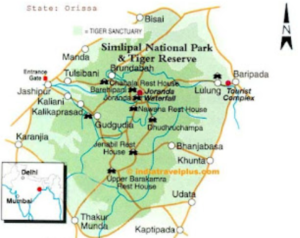
Introduction of an AI-based surveillance system
- The introduction of an AI-based surveillance system, TrailGuard AI, has helped reduce such incidents significantly.
- This system consists of 100-150 cameras equipped with AI technology to detect human presence in the forest.
How TrailGuard AI Works
- The AI-enabled cameras operate in low-power mode but switch to high-power when they sense movement.
- The cameras classify objects such as animals, humans, and vehicles.
- If poaching activity is suspected, the system transmits an image to officials within 30-40 seconds.
- A control room monitors the alerts and informs the forest department for immediate action.
Impact of TrailGuard AI on Poaching Reduction
- In the last 10 months, 96 poachers have been arrested, and 86 country-made guns seized.
Concerns of Local Communities
- Tribal communities living around Similipal traditionally rely on the forest for resources.
- Increased surveillance has made villagers hesitant to enter the forest for firewood and other essentials.
- Authorities are working on safer ways for locals to access the forest without facing unnecessary restrictions.
Future Applications of AI in Wildlife Conservation
- The TrailGuard system has been deployed in five States at over 14 sites.
- It is also being used in Kanha Tiger Reserve in Madhya Pradesh and Dudhwa National Park in Uttar Pradesh to monitor human-wildlife conflict.
- Experts believe this technology can revolutionize wildlife monitoring and anti-poaching efforts across India’s protected areas.
| Similipal Tiger Reserve |
|
2. Carbon capture: a pricey fix?
(Source – The Hindu, International Edition – Page No. – 7)
| Context |
|
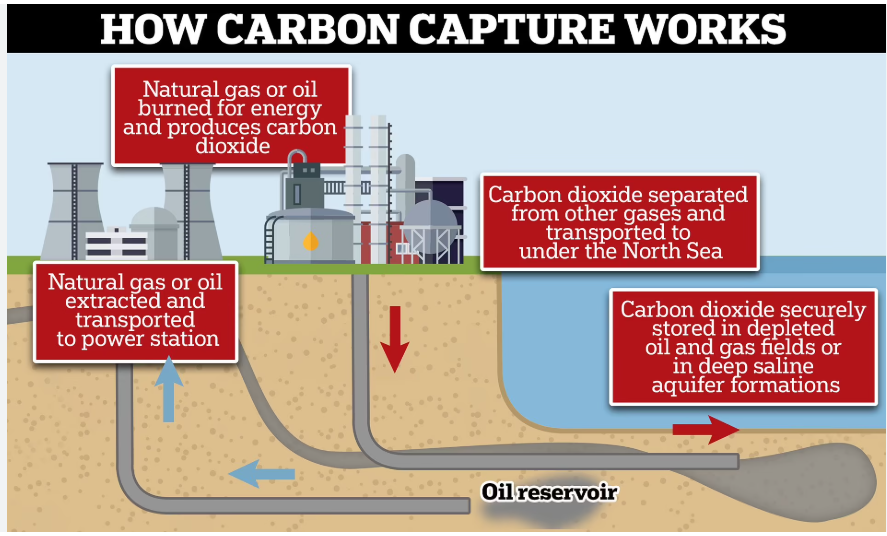
What is carbon capture?
- Definition: Carbon capture is a technology that captures carbon dioxide (CO₂) emissions from industrial sources or directly from the atmosphere to reduce greenhouse gas levels.
- Purpose: It aims to mitigate climate change by preventing CO₂ from reaching the atmosphere.
- Process:
- Capturing CO₂ from power plants, factories, or the air.
- Transporting it via pipelines or ships.
- Storing it underground in geological formations or converting it into useful products.
- Types:
- Pre-combustion capture: Removes CO₂ before fuel is burned.
- Post-combustion capture: Extracts CO₂ from exhaust gases.
- Direct air capture (DAC): Captures CO₂ from the atmosphere.
- Challenges: High costs, energy requirements, and concerns over long-term storage safety.
- Alternatives: Renewable energy sources like solar and wind are often seen as more cost-effective.
check more – 15 February 2025 : Daily Current Affairs

